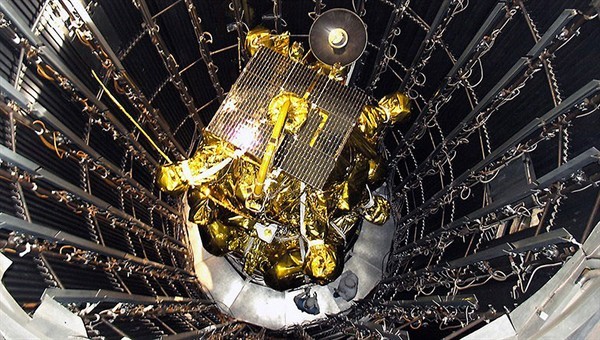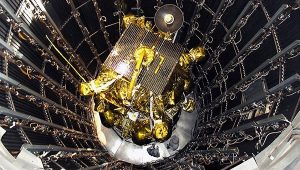
A report on the investigation into Russian Mars probe Phobos-Grunt’s failure after its November 8 launch and subsequent January 15 reentry was submitted to Roscosmos chief Vladimir Popovkin on January 30, 4 days after it’s January 26 due date. On January 31, Popovkin presented the findings to Deputy Prime Minister Dmitry Rogozin. Initial focus from the investigation is falling on the onboard computer, which “spontaneously rebooted and switched into standby mode,” according to Popovkin.
Some information has begun to surface from investigators and Popovkin’s public statements that point to insufficient radiation hardening of electronic components as a key cause of the probe’s failure. “The most likely reason [for the glitch] is the impact of heavy charged space particles,” Popovkin said according to Ria Novosti.
Normally, electronic components intended for space applications are radiation hardened – both through processing or design of the components themselves as well as via fault tolerant programming. It seems one or both of these facors may have been at fault in Phobos-Grunt. Popovkin has sugggested that substandard imported microchips may have been at least partially to blame according to Ria Novosti – although he did not specify the company or country of origin of the parts.
Experiments testing the theory that the probe was disrupted by radar from the United States turned up completely negative. According to Lentu, electronics similar to those aboard Phobos-Grunt were able to withstand maximum radar exposure and the commission ruled out any external or foreign influence. Experiments testing the probe’s ability to withstand intereference from its own power system were also negative.
According to Anatoly Zak of www.russianspaceweb.com, the commission also noted that the pre-programmed flight sequence did not require an attitude control confirmation prior to escaping Earth orbit, leaving open the possibility that an incorrect orientation at this juncture could have led to mission failure.
The full report from the commission’s investigation should be released to the public in early February. Talk is already turning to Russia’s next Mars mission. Popovkin has been reported as saying that if talks with ESA regarding an ExoMars collaboration do not bear fruit, a new Phobos-Grunt launch may be in the future.
The animation below explains the ExoMars mission:


















































































































![A trajectory analysis that used a computational fluid dynamics approach to determine the likely position and velocity histories of the foam (Credits: NASA Ref [1] p61).](http://www.spacesafetymagazine.com/wp-content/uploads/2014/05/fluid-dynamics-trajectory-analysis-50x50.jpg)



Leave a Reply